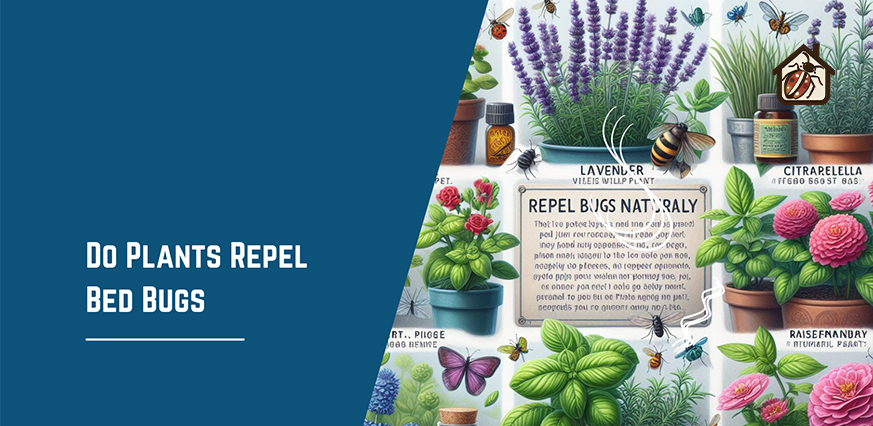
Which Plants Repel Bugs
Bugs are almost impossible to get rid of, but there are certain plants that bugs do not like. Are you tired of having creepy crawlies around your home? But do you equally refuse to use any insecticide or pesticide in your home to protect yourself and your family from harmful chemicals? Well, you’ve come to the right article then. You can plant them in your home or around your home to keep those pesky little buggers away.
This article will tell you, do plants repel bugs. There are indoor and outdoor plants that will help you keep the bugs at bay. Also, bed bugs hate some of the smells of some plants.
What indoor plants repel bugs?
Some indoor plants contain certain compounds in them including mint, petunias, catnip, and rosemary help them repel insects. The following plants are some indoor plants that repel bugs using their smell, taste, or texture.
- Mint
- Petunia
- Catnip
- Rosemary
How does Mint repel bugs?
Insects dislike mint’s essential oils, such as pulegone and menthol. Mint’s potent scent serves as a natural insect repellent, which makes it a great option for controlling bugs indoors.
How does Petunias repel bugs?
Chemicals like acetylcholine, which petunias release, keep common garden pests away. These compounds are the plant’s natural defense against pests such as tomato hornworms and aphids.
How does Catnip repel bugs?
Nepetalactone, a substance found in catnip, deters ants, cockroaches, and mosquitoes. Because of its special makeup, catnip works well as a natural insect repellant.
How does Rosemary repel bugs?
Essential oils and substances like rosmarinic acid are what give rosemary its scent. Because mosquitoes and other insects dislike its scent, rosemary is a helpful herb to keep indoor bugs away.
What outdoor plants repel bugs?
Some outdoor plants contain certain chemicals, which they release, that are known to repel bugs. These outdoor plants include lavender, basil, citronella, and chrysanthemums.
- Lavender
- Basil
- Citronella
- Chrysanthemums
How does Lavender repel bugs?
Essential oils derived from lavender, such as linalyl acetate and linalool, deter flies, moths, and mosquitoes. Lavender smells naturally repel bugs, making an outdoor space free of insects.
How does Basil repel bugs?
Citronellol, a substance frequently present in citronella plants, is one of the components found in basil. Due to these substances’ ability to repel flies and mosquitoes, basil is a useful addition to outdoor areas for bug protection.
How does Citronella repel bugs?
Citronella oil is produced by citronella plants, such as citronella grass. Citronellal and geraniol, two well-known naturally occurring insect repellents, are included in this oil. Citronella keeps pests out of outdoor areas by disguising other attractants.
How do Chrysanthemums repel bugs?
The natural pesticide pyrethrin is found in chrysanthemums. In many commercial insect repellent products, pyrethrin is employed. Chrysanthemum plants offer a chemical-free, natural defense against pests, helping to keep a variety of garden pests under control.
You may also like:
FAQs
What types of plants repel flies and garden bugs?
What plant repels the most insects?
What do bugs hate the most?
What plant repels mosquitoes in Canada?
What is a repellent plant?
Conclusion
After reading this blog, you now have an idea about do plants repel bugs. Plants are always a win-win. On one hand, the bugs are kept away on the other; it improves your home’s aesthetics and you get to breathe in good air. These plants release natural compounds, adding them to indoor and outdoor places not only improves the aesthetics but also helps create an atmosphere that is resistant to insects.
Hope this helped and you have a beautiful space, BUG FREE!


